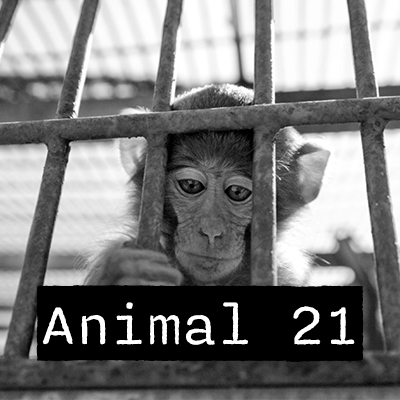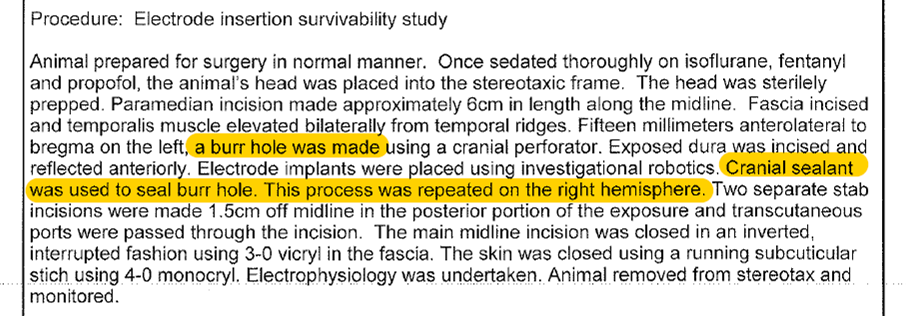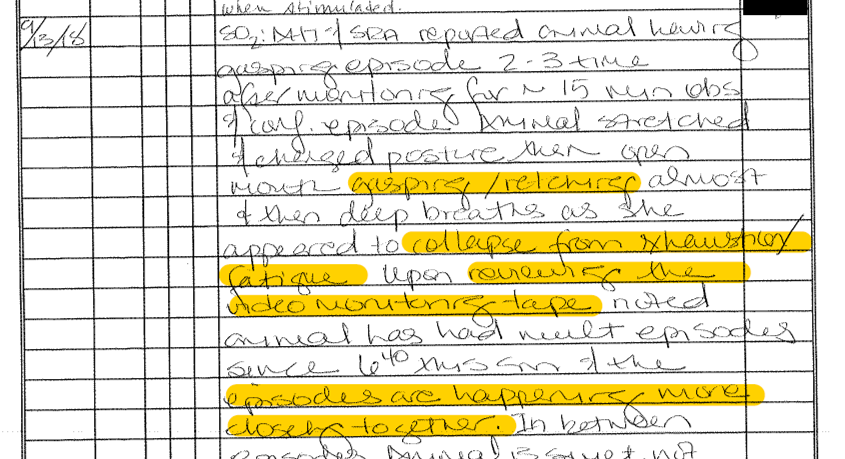Animal 21
Through 2020, Elon Musk’s company Neuralink paid $1.4 million to the University of California, Davis, to use its facilities, where experimenters removed portions of monkeys’ skulls to implant electrodes in the animals’ brains related to the development of a “brain-machine interface.” Only in 2022, following a public records lawsuit by the Physicians Committee for Responsible Medicine, did the troubling details of these experiments begin to come to light. The company is still conducting experiments on animals at its facilities in California and Texas.
This is the story of one monkey, “Animal 21.” She was a macaque who suffered for days at the hands of Neuralink employees. She was 7 years old on Sept. 10, 2018 when they made an incision along the side of her head & cut the underlying muscle.
They drilled two burr holes into her skull, inserted electrodes attached to implants, and closed the holes with “cranial sealant.” The Neuralink surgeon used Bioglue, a surgical adhesive, which was not approved for use in this surgery and is known to be toxic to nerve tissue.
The next day, Animal 21 was “shivering” and her “legs seem weaker.” UC Davis staff believed she was suffering from a “brain edema” (i.e., swelling in her brain).
Later that day, staff noted that Animal 21 was “declining” and that it’s “probably from cerebral edema.” They “elected euthanasia” on Sept. 11 but kept her alive for two more days as her health deteriorated.
The next morning, UC Davis staff noted that Animal 21 was suffering from ataxia, meaning she had lost coordination and balance. She was experiencing “paresis” or partial paralysis of “both leg.” She had a “moderate to severe neurologic deficit” and “depression.”
The Neuralink experimenter in charge (the “P.I.” or principal investigator) wanted to “keep the animal for another 24 hrs” even though they were told the “long-term problem associated w/ paresis.”
The next day, she was even worse. On Sept. 13, Animal 21 was “pale,” there wa “yellow [discharge] from implant,” and there was vomit in her cage.
She was seen “gasping/retching” and “collapse[d] from exhaustion/fatigue.” After “reviewing the video monitoring tape,” UC Davis staff noticed that the “episodes are happening more closely together.”
When staff at UC Davis finally euthanized Animal 21 on Sept. 13, 2018, the necropsy report was shocking. Bioglue was “covering and compressing a large area of the left cerebrum” and blood had built up on the surface of the brain (“subdural hemorrhage”).
They also found “acute” ulcers (sores) in her esophagus “likely due to vomiting” and blood (“melena”) in her stomach.
The necropsy report for Animal 21 made it clear that the surgical adhesive Bioglue was to blame. “Bioglue was toxic to the adjacent tissues (as described in the contraindications and warning sections of the IFU),” using the acronym for “Instructions for Use.”
Despite this tragic outcome, 11 months later, the Neuralink surgeon used Bioglue during an experimental procedure. Again, the adhesive leaked onto the animal’s brain. Neither incident was reported by UC Davis to the U.S. Department of Agriculture as required by the federal Animal Welfare Act, and the agency refused to cite the university and Neuralink for a violation even after the Physicians Committee filed a complaint in February 2022.
















